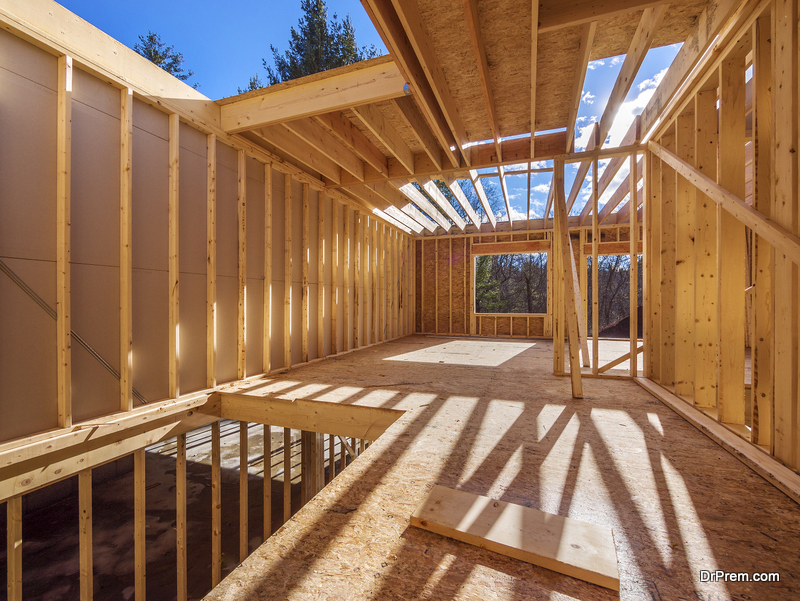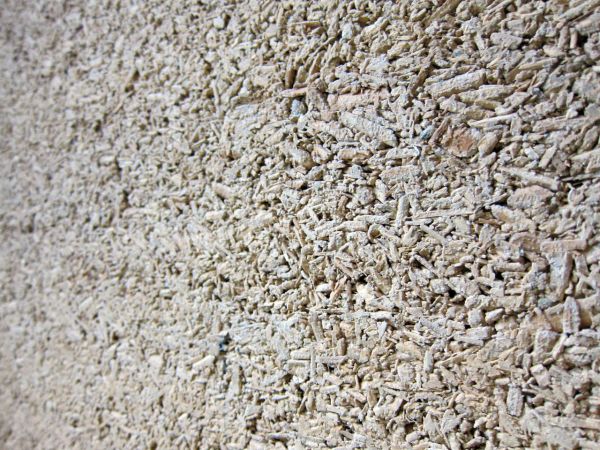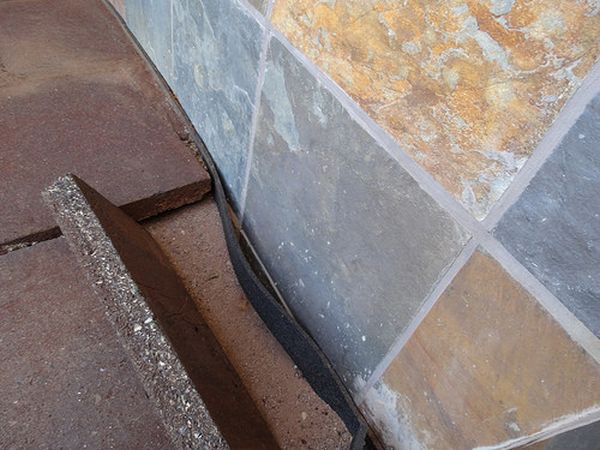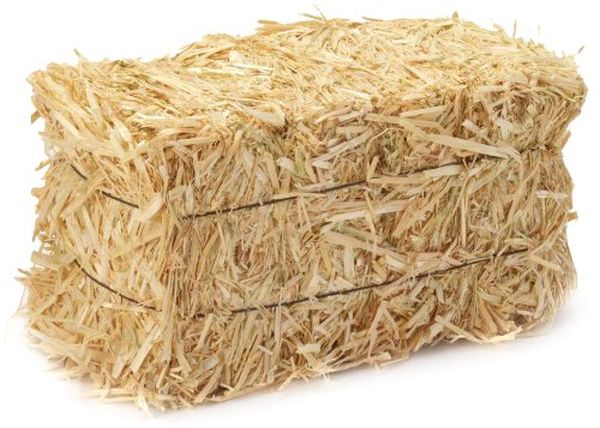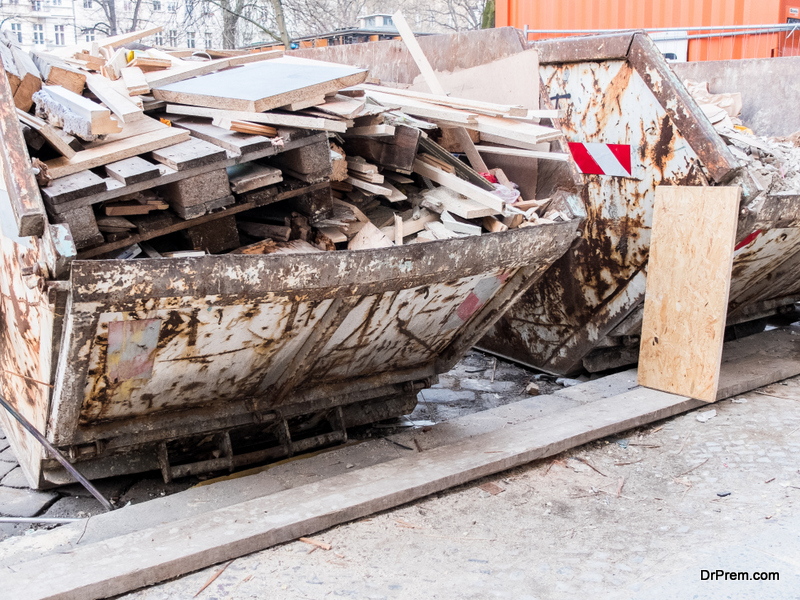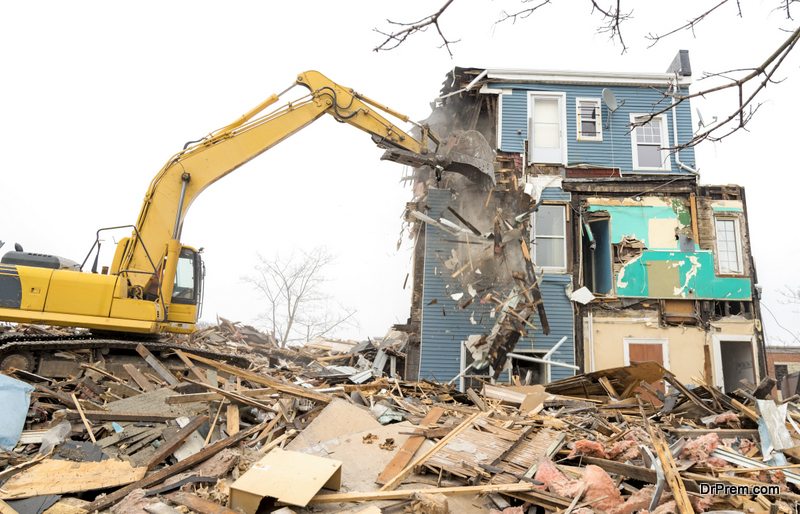Home is the safest place for any living being on this planet. And a strong home makes the security concern even better. Right from wood to brick and even plastic, man has been experimenting with different types of construction materials to make his home strong and durable from the ancient times. In the ancient times, humans used caves as homes to protect themselves from wild animals and inclement weather. Over time, he had to travel to various places in search of food and other materials. Therefore, he had to build homes with various durable materials. After the evolution of architecture, there has been a constant change in the structure and design of the buildings. Nevertheless, five materials have stood the test of time and are being used today to build the strongest buildings in the world. Of course, team up with a local building, heating and plumbing service such as the Muswell Hill plumbers Staunch & Flow. Let us check out best building materials for long lasting buildings.
1. Wood – an ever green classic material
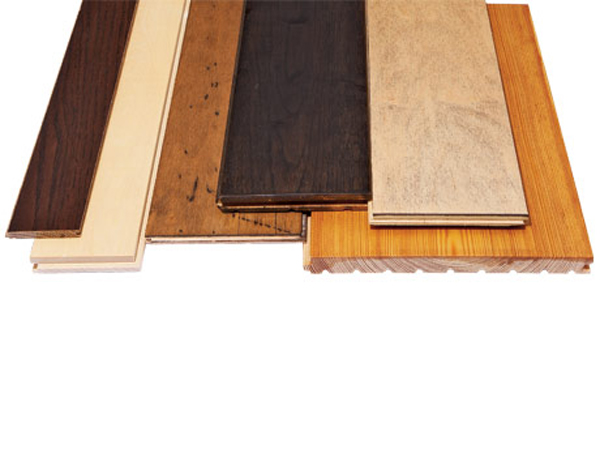
One of the most oldest forms of construction material, wood has stood the test of time. While sometimes we use wood as a decorative material, in some cases we also use it to construct our homes. Log cabins is one such classic example that we can find even today. In addition, this is a material blends in perfectly with other construction materials as well. When compared to stone, wood is lightweight. It is also strong and seasoned to remove the moisture. During ancient times, bricks, newspapers and other such materials for insulation purposes and to make energy efficient homes.
Although Wood is easy to work with however, there are some downsides of using wood for construction. It is easily prone to decaying and damages due to moisture and pest infestation. Fire can cause serious damage and destroy wood. Even though there are drawbacks, wood buildings are known to survive for long periods. One of the oldest buildings existing today is found in Japan. The Horyu-ji temple dates back to the 8th century.
2. Brick – the favorite and pocket friendly construction material
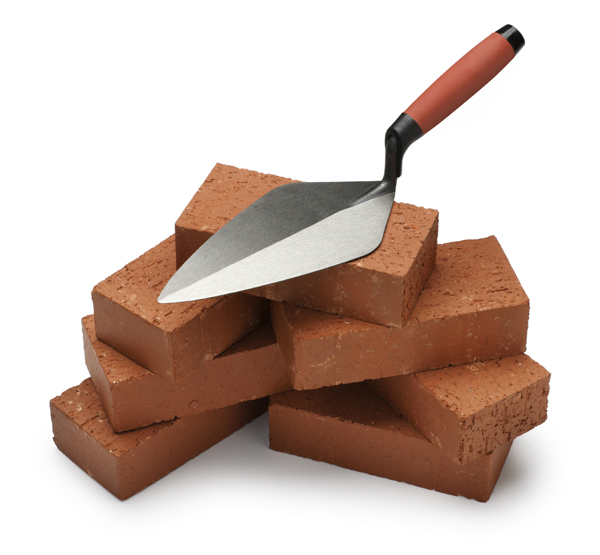
Brick is another name that we can think of when we look at best building materials for long lasting buildings. These are often made of clay. During the ancient times, people used bricks to make different types of buildings and structures. Some of them stand strong even today.
According to recorded history in construction materials, Sumerians were one of the earliest people for making bricks. During those days, the bricks were uneven and crude as they used to dry the slits that were left behind after a storm under the sun.
The sun drying process helped the slits to become hard. Then they used to dig out the slits by breaking them into small chunks. These chunks were used to build different structures like the huts, walls etc. Certain experiments led to the formation of molds that could make even bricks that were easy to use. Heating the brick made them durable and ended the problem of the melting bricks due to rain. in the recent times, we have seen revolutionary sustainable bricks for designer buildings.
3. Stone will give you the natural touch
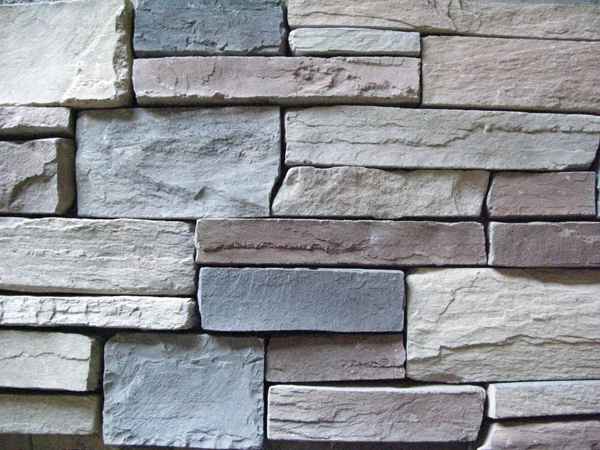
The toughness and durability of stone makes it one of the best building materials for long lasting buildings. However, the challenge lies in quarrying and moving the stone to the required areas. If you have the right equipment to cut and use the stone for buildings, you can get an extremely strong and natural construction material. It can be stacked up easily to support heavy load. It is resistant to all kinds of natural elements too.
There are numerous extraordinary structures made of stone that leave us spell bound. Even today, you will find some beautiful building designs made from stone including some amazing houses made from stone. Most of the materials used for building today are cheap and have taken the place of stone. Many people use concrete, steel and wood along with a decorative stone layer to stay within the budget.
Some synthetic materials also mimic the look and feel of stone structures. They are light, inexpensive and do not require veneers. Stone has been around for ages and has a unique aesthetic value that cannot be diminished. It is because of these qualities, we consider stone as a durable material for buildings.
4. Concrete – a material that is a blend of many
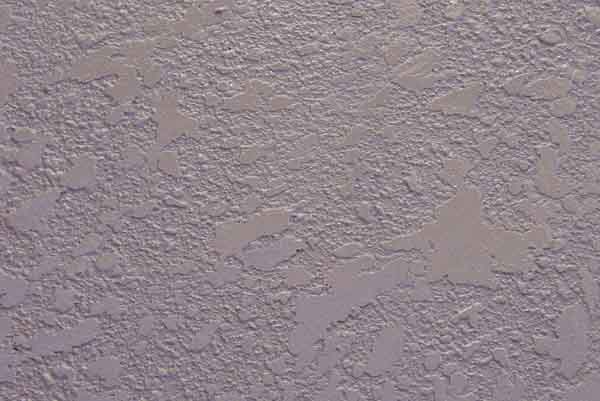
Concrete is mixture of a number of things like sand, stone, binders, cement etc. This mixture is so flexible that you can pour and mold it into any shape and size or even harden it before transporting. Even in ancient times, people would use concrete for various reasons. during the 1860’s when people understood the tensile strength of concrete even though it was one of the construction materials for buildings even at that time.
Not only was concrete the best building materials for long lasting buildings but in fact a popular material as well. During construction, the central support system of the foundation consists of narrow steel rods and reinforced concrete. This provides a sturdy and durable foundation for the structure. It’s rebar enforcement makes it ideal for constructing beams, walls, foundations, slabs, frames and various structural design ideas. It is also a perfect material to consider for underground houses.
Using mesh and rods along with concrete has made it relatively a cheap, reliable and durable material for construction economically. 20th century reinforcements have made concrete even more sought after. Pre-cast concrete is manufactured under controlled conditions. Its water repelling features and resistance to expansion and contraction makes concrete a durable material for construction. We make Pre-stressed concrete by keeping steel strands in the concrete to increase the resistance and strength.
5. Iron and steel – the best building materials for long lasting buildings
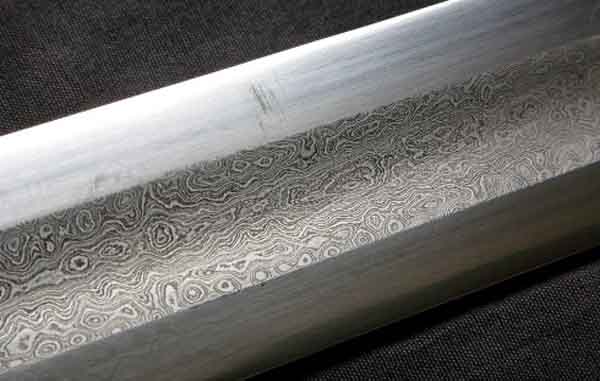
Photo Credit: Elite Garage Door & Gate Repair Of Seattle
The demand for stronger materials appeared during the initial days of when man constructed huge structures. Given the fact that tall or huge buildings are very heavy, the need to use the best building materials becomes more important. This is where iron and steel becomes the best building materials for long lasting buildings. Steel has a dual role; it provides the strength for the basic framework so that it can take on the weight of building high structures. The best part is that this is a budget friendly option as well.
Along with that, we use or mix steel with concrete and/ or for the foundation. For faster installation, fabricated steel is a good choice. You can even rivet, weld and bolt it in any place. Iron and steel are recyclable materials, this is why they are also an eco-friendly option and perfect for green buildings. Steel technology has enabled man to build and design tall structures that have completely changed the outlook of architecture. Steel structures have also become design ideas for various commercial and residential properties as well.
7 Building materials that make excellent environmental sense
Building an environmentally conscious home starts with the selection of a building material that stands the test of time and is sustainable and recyclable. Concrete holds together the present world, but this ubiquitous gray material is a heavy source of greenhouse gases. During the manufacturing process of concrete a large amount of carbon dioxide is released into the environment, which raises issues about its net negative effect on nature. Here are some of the best sustainable options in building materials to consider for your new home.
-
Hempcrete
A naturally derived material that looks a lot like concrete is rapidly gaining popularity among eco-conscious builders in many nations. The material is created from the woody inner fibers of the hemp plant, which is a fast growing renewable source. The fibers are then bound together with lime to create concrete like structures. The added benefit of using Hempcrete is its light weight. The material is easy to transport and will save money on fuel as well as manpower to install.
-
Recycled plastic
Watch out for this sustainable innovation in building materials. Researchers are trying passionately to create concrete that contains microscopic ground up plastic granules in it. This idea is a strong step towards utilizing the otherwise non-biodegradable plastic waste that is clogging the landfills. Instead of mining, extracting, and milling new resources and exhausting them, this can be a great way of preserving nature and also recycling plastic.
-
Wood or bamboo
Definitely a notch above concrete and steel building materials, wood is a holistic choice over industrial products. Properly maintained forests are valuable biodiverse and renewable systems, which can serve as sources for construction products. A material superior to wood in construction is bamboo. While the quality difference is negligible and virtually inexistent, bamboo is derived from a grass that can renew within three years. Considering the costs of sourcing bamboo, many nations have started locally sourcing this building material. It is a lightweight, durable, and rapidly renewing material.
-
Ferrock
A new research uses recycled material to create a building material that is actually stronger than concrete. Utilizing many materials that are otherwise non-recyclable like steel dust from the steel industry, the material has a unique property of setting. It absorbs carbon dioxide in the air to trap it in its drying and hardening process. This uniqueness of Ferrock makes it environmentally friendly because of its carbon neutral effect.
-
Straw bales
A byproduct of the grain industry, straw can be used to build beautiful eco-friendly houses. This is extensively been done by Mark Jenson, who is building straw bale houses for North American communities. A great insulator, when kept dry, straw can last for thousands of years. Additionally it also has excellent bonding properties with stucco and plaster walls. This lightweight and environmentally inclined building material is a great substitute for concrete.
-
Recycled steel
Customized steel panels and beams that can fit like a part of a puzzle with every specific design are a raging trend in the building industry. The durability of a recycled steel beam especially in situations such as strong winds and earthquakes in unparalleled among many other recycled building materials. Because it is a recycled product of steel, it requires 75% less energy than the main manufacturing process.
-
Earth
Abundant, free of cost, hundred percent natural and pure, with no additional costs of transportation, earth-made houses are accounted for in codes of many countries like New Zealand, China, and Peru. Earth is the most abundant renewable source and also has an excellent thermal mass.
Building materials are the core in the design of the world as we know it now, most of which use concrete. With the recent environmental awakening, the industry is rapidly trying to replace this concrete with environmentally durable and sustainable materials, some of which hold immense promise.
Materials that you can get from Construction and Demolition Waste
If you reside in a city anywhere in the world, you will see construction happening left, right and centre. New buildings are being made and old buildings are being demolished to make way for new construction. All the demolition leads to the production of waste known as construction and demolition waste or (C&D) waste. The disposal of construction waste is a huge problem for developers, builders and owners, and is often dumped into landfills. This demolition waste can actually be recycled and reused in the construction of new buildings, which can help to reduce the use of depleting raw materials.
Awareness about the utilization of demolition waste is essential
Utilizing the C&D waste is a comparatively new concept and there has to be more awareness about the importance of it. Most owners are unaware about the potential of demolition waste and builders and developers may be apathetic towards the issue or don’t have the required expertise to carry out environmentally friendly C&D waste disposal and reuse/recycling.
The government and non-governmental agencies have to make more efforts to spread awareness about reusing all the materials generated during demolition. There has to be proper rules and regulations in place which would ensure that all material which can be used is used in other projects, as construction industry consumes a vast amount of natural resources. The government can give incentives to builders who follow sustainable building methods.
Which type of C&D material can be reused?
Reusing of demolition waste is different from recycling. Materials which can be reused do not require any further treatment to transform it into useful products. They can be retrieved from the waste and put into use.
Bricks are in good shape or full bricks are screened from the C&D waste can be used to build partition walls.
Reusing construction waste is much more advantageous as it does not require any additional energy to make it usable, builders should make a plan for demolition. Having a plan for demolition will allow useful products/materials such as windows, doors, reinforcement, bricks and structural steel can be extracted carefully. After the reusable materials are extracted, the demolition waste left over can be kept for recycling.
What does a demolition plan entail?
A demolition plan is needed to execute a systematic demolition. The first step could be segregating household waste, then extracting electrical and mechanical equipment, interior and exterior finishing materials, water proofing and roofing materials, then demolishing the structure at the end.
The C&D waste should be shifted from the site immediately and stored safely on a temporary basis in a previously designated area.
C&D materials which can be recycled
1. Concrete
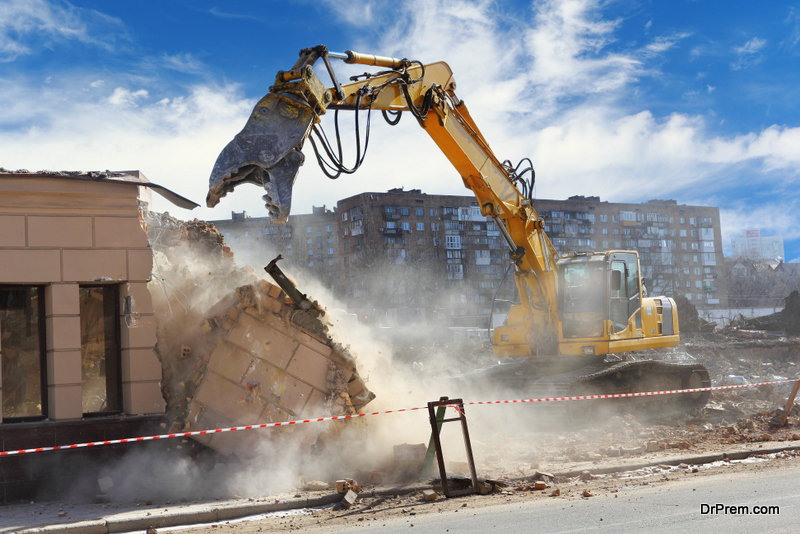
Concrete is composed of coarse and fine aggregates, cement and water, and other industrial additives to enhance the properties. The aggregates are mainly natural materials like sand. Sand and water are becoming scarce which is why builders should recycle construction material, which can conserve a huge amount of water and aggregate. The effort should be to use treated waste water in construction, as potable water tables are depleting day by day.
RCA or Recycled Concrete Aggregate is an excellent alternative to natural materials, as it can help to fulfill the need of construction material especially in areas where there is a scarcity of water and aggregate.
2. Metals
Aluminum and steel are products which are obtained as waste after demolition. Steel beams can be used without recycling. Aluminum can be recycled using the solid bonding method. This recycled aluminum can be used for making household appliances. Aluminum can be recycled many times and can be recast into the original form and used again for construction.
3. Bricks
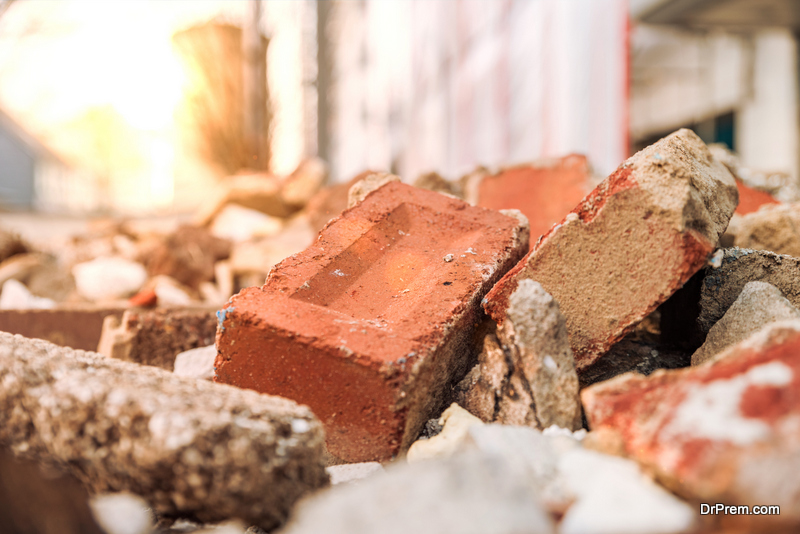 Bricks are used in all types of construction in India, residential and non-residential. It makes up for a significant amount of construction material in new constructions and is second to concrete in terms of demand. Bricks have a unique property of being able to withstand the entire life of a building. Thus bricks even when demolished can be used again and again and the brick dust or other parts of bricks which cannot be recycled can come into different uses during construction.
Bricks are used in all types of construction in India, residential and non-residential. It makes up for a significant amount of construction material in new constructions and is second to concrete in terms of demand. Bricks have a unique property of being able to withstand the entire life of a building. Thus bricks even when demolished can be used again and again and the brick dust or other parts of bricks which cannot be recycled can come into different uses during construction.
After mortar removal, bricks can be used to construct new buildings, or to pave streets, which is a part of sustainable building methods. Brick paved streets are quite attractive, and allow water to flow through.
4. Plastic
Plastic is repurposed into different products such as plastic tables, lumber, benches, stationery and other products. A new use of plastic is to prepare road surfaces which are resistant to water. Alternates to plastic should be developed as recycled plastic cannot be recycled again, thus ending up as waste in oceans and landfills.
5. Tiles
 Broken tiles can be crushed into aggregate which can be used in construction. Tiles which are broken into small pieces can be extracted and used as art material for murals, sculptures. Tile pieces can be used to make table tops, drive ways and subways etc.
Broken tiles can be crushed into aggregate which can be used in construction. Tiles which are broken into small pieces can be extracted and used as art material for murals, sculptures. Tile pieces can be used to make table tops, drive ways and subways etc.
6. Glass
Glass can be recycled to make room dividers, lighting fixtures, and many other products.
7. Wood
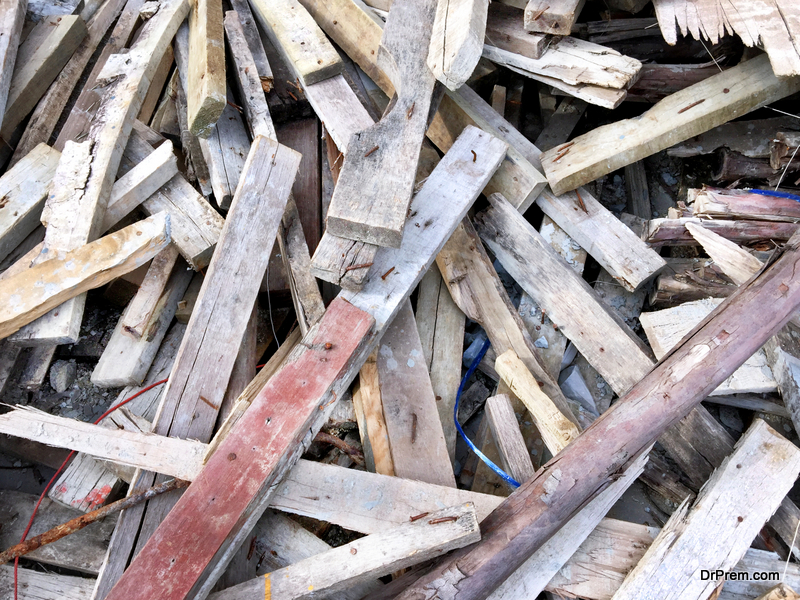 Wood waste can be recycled to make particleboard, fiber board, animal bedding or to generate renewable energy. Chipped/shredded wood can be used as sludge bulking medium in sewage and in lime pallet products.
Wood waste can be recycled to make particleboard, fiber board, animal bedding or to generate renewable energy. Chipped/shredded wood can be used as sludge bulking medium in sewage and in lime pallet products.
Tips for building home using eco-friendly constructional materials
If you just employ eco-friendly materials and ignore the sustainable building techniques, you are just doing half the job. Below are some tips for building house with materials that make environmental sense.
1. Using reclaimed building materials
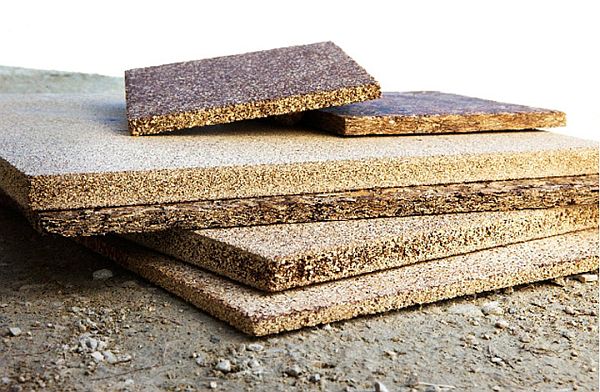 60% of solid waste is generated by construction, renovations and demolitions and similar amount of natural resources. Hence, it is necessary to reuse these materials into natural reserves. Not only does this reduce greenhouse emissions, but also help in lowering energy consumption. Some of these items include fine grain wood, cabinets, wood floorings, marble countertops, iron work, and antique fixtures.
60% of solid waste is generated by construction, renovations and demolitions and similar amount of natural resources. Hence, it is necessary to reuse these materials into natural reserves. Not only does this reduce greenhouse emissions, but also help in lowering energy consumption. Some of these items include fine grain wood, cabinets, wood floorings, marble countertops, iron work, and antique fixtures.
2. Buying building materials that are recyclable
Builders should construct a new structure with materials that can be reused. Many change their interiors or office/home structure within few years. Reusing these demolished or removed structures can help conservation of resources. Some of the products that can be used are steel, drywall, insulation, plastic lumber, countertops, carpet padding, and glass tiles. Contractors or builders can use these items again.
3. Installing environmentally preferable products
 Eco friendly products if installed help in efficient use of water and waste. They not only reduce waste but also conserve water used in the home or office. They are recyclable and energy efficient. They also improve the quality and health of the indoors. Some of these products are showers, toilets, irrigation systems and sinks.
Eco friendly products if installed help in efficient use of water and waste. They not only reduce waste but also conserve water used in the home or office. They are recyclable and energy efficient. They also improve the quality and health of the indoors. Some of these products are showers, toilets, irrigation systems and sinks.
4. Buying local
Locally available products should be preferred. They not only avoid the fuel needed to ship the product but also enhance the local business. Emissions caused during transportation help to the increase in pollution of the nature. It would always be preferred to buy products from the local market rather than spending on an eco-friendly product shipped from a large distance.
5. Reducing loads
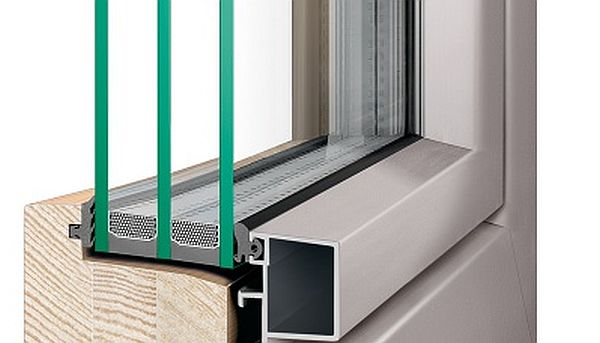 The energy needs of a house or office is called loads. Generally, eco friendly houses increase the performance of the energy levels and reduce any sort of air leaks. To save energy, builders prefer the use of high performance windows and employ insulation. Basically, the energy used for the construction of the house is reduced enormously.
The energy needs of a house or office is called loads. Generally, eco friendly houses increase the performance of the energy levels and reduce any sort of air leaks. To save energy, builders prefer the use of high performance windows and employ insulation. Basically, the energy used for the construction of the house is reduced enormously.
Final Words
These days many people prefer greener homes. Eco friendly interiors are expected to rise by 55% in 2016. According to the pros at Art Construction, “The term ‘eco-friendly’ describes a product that is either made in an environmentally safe way or reduces a homeowner’s carbon footprint.” The reasons are energy conservation, pollution free atmosphere at home, and less maintenance and lower bills. Moreover, such homes not only are durable but also keep the members of the family healthy.


